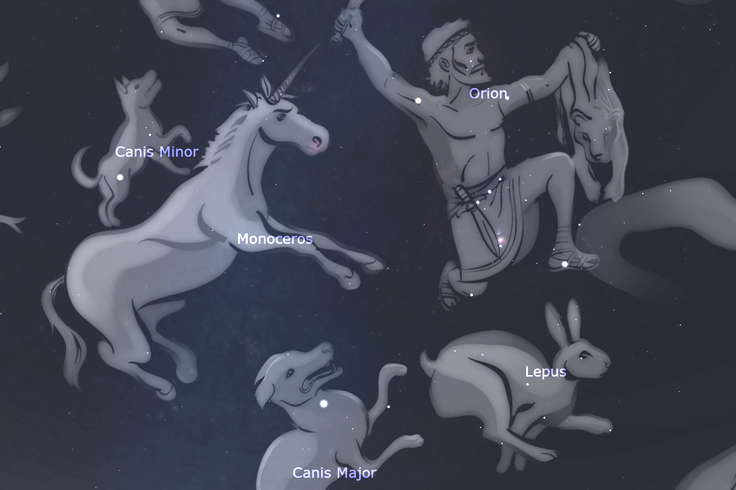February 4th marks the midway point between Decemberʼs solstice and the March equinox. Celebrate that celestial milestone by getting outside to gaze in awe at the amazing array of bright stars youʼll find overhead on February evenings.

Listen Here:
Podcast: Play in new window | Download
Subscribe: Apple Podcasts | Google Podcasts | Spotify | Email | RSS | More
Last month Earth was its closest to the Sun for all of 2023. Sure, cold weather in the Northern Hemisphere is telling a very different story. But we northerners are rapidly moving away from the depths of winter — at least astronomically speaking. In fact, February 4th marks the midway point between December’s solstice and the March equinox. Nights are getting shorter — so take advantage of all your stargazing opportunities while you can.
Did you know that you can tell the season just by looking at the Moon? It’s true, and to get the explanation for this celestial shortcut, listen to this month’s Sky Tour podcast. Meanwhile, the full Snow Moon falls on the 5th, followed by last quarter on the 13th, and new Moon on the 20th. Soon after that it appears in the southwest after sunset, first as a thin crescent, then reaching first quarter on the 27th.
Some clear evening in February, go outside after it’s gotten reasonably dark, around 7 p.m., then find a spot with a wide view all around, and face south. Give your eyes a couple of minutes to adjust to the darkness, and then look high up to spot Mars.
Now sweep your eyes to the right, and make a mental snapshot of what you see. Apart from Jupiter and Venus, you’re not seeing many obvious stars, are you? Well, you can probably pick out the Great Square of Pegasus, a giant diamond of four medium-bright stars over the western horizon. But nothing really commands your attention, right?
Now go back to Mars and sweep your gaze to the left half of the sky, toward east, and to the area below Mars. What a difference! Even if you have a lot of light pollution, you’ll see a bunch of bright stars. And why is that? Well, it’s not obvious, but in that direction you’re looking outward along the plane of our home galaxy, Milky Way. And it happens that many bright stars are relatively close by on that side of the Milky Way’s disk. The most obvious one, the lowest of the lot down in the southeast, is Sirius. It’s actually the brightest star in the entire nighttime sky and only 8½ light years from Earth.
To its upper right of Sirius is Orion, the Hunter, arguably the brightest and most striking constellation in the northern sky. Orion is easily distinguished even through light pollution because of the row of three medium-bright stars that form his belt. And this iconic constellation is your key to identifying several other interesting constellations in his immediate vicinity. You’ll get to meet them all by listening to this month’s Sky Tour astronomy podcast.

Stellarium
In fact, this monthly podcast is an easy way to introduce yourself to the nighttime sky, no matter what your level of experience. So download or stream this month’s 13-minute romp across the starry firmament — it’s fun, entertaining, and informative!
 0
0
Comments
You must be logged in to post a comment.